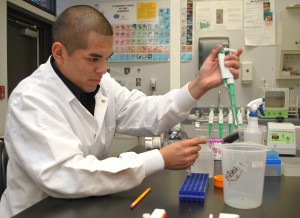That’s right, it’s time again for state legislatures to begin work on yet another year of lawmaking. It’s also time for our annual publication of “2015 Year in Review: State Policies Impacting CTE,†a joint venture of NASDCTEc and the Association of Career and Technical Education. You can find the report here on January 21.
Have you signed up for our January 21 webinar yet? Join us as we unpack the policy trends from 2015 and take a deep dive on major efforts in Colorado with state Senate Minority Leader Rollie Heath and Dr. Sarah Heath, Assistant Provost for CTE with the Colorado Community College System.
Looking ahead to 2016, several statehouses are already off to a fast start. In fact, 30 legislatures have already begun their work, and as many as 16 governors have already given their annual State of the State or budget addresses. We will continue to provide updates as the remaining governors give their speeches and unveil their budgets. (Note: Montana, Nevada, North Dakota, and Texas do not have legislative sessions this year.)
The governors’ addresses often provide a window into the major issues that will dominate the year’s legislative agenda. Already, it seems to be a mixed bag fiscally with some governors citing the acute budget crunch facing their states. Others are reveling in their surpluses and proposing major increases to core services such as education and health care that were often neglected as the states recovered from the Great Recession.
Here’s a quick roundup of some gubernatorial highlights as they impact CTE:
- Virginia Governor Terry McAuliffe called for transforming the Commonwealth’s education and workforce development systems to better meet the demands of the future. McAuliffe hailed the bipartisan backing of his budget proposal Go Virginia, which seeks to foster regional collaboration among government, businesses and education. He highlighted the need to build an education system that emphasizes entrepreneurship, hands-on learning, early college courses and industry credentials. He also called for an end to an education system beholden to seat-time. He also called for more than $1 billion in new funds across all levels of education, including $139 million for K-12 education and $25 million to Virginia’s community colleges to produce more industry certifications and occupational licenses.
- In Idaho, Governor Butch Otter proposed a 9 percent increase for the state’s community colleges as well as $5 million for college and career advising, and $1.1 million to develop a competency-based education system for up to 20 school districts. Other proposed spending includes grants for STEM and computer science.
- Finally, West Virginia Governor Earl Ray Tomblin proposed restructuring the state’s current innovation zone system with a new program, Innovation in Education, which reallocates $2.5 million to help schools develop new methods to increase student interest in STEM and entrepreneurship.
Other governors (California, Georgia and New York) proposed major K-12 funding increases, but it remains unclear how and if that will impact CTE. Similar, several governors (Georgia, Indiana, and South Dakota) also focused on increasing the salaries for K-12 teachers and other ways to recruit and retain teachers.
Andrea Zimmermann, State Policy Associate





